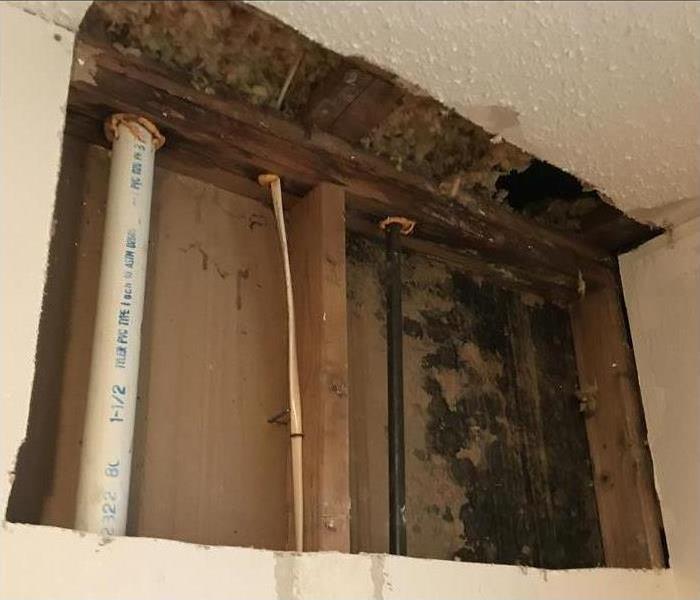Mold’s 6 Most Common Hidden Locations in Commercial Buildings
7/19/2021 (Permalink)
Mold's Most Common Hidden Locations
Mold requires water and food to thrive. Food can be as easy as dust particles or skin cells which are found almost everywhere in most commercial buildings. That means the unpredictable element in mold growth is obtaining a water source. Although high humidity can allow for colony reproduction, most often the source of mold’s life-beginning liquid is a result of water damage. Here are six of mold’s most common hidden locations in commercial buildings in Pflugerville, TX.
1. Ductwork often contains moisture during summer’s cooling season. When the duct lining materials collect moisture, mold can quickly form.
2. Carpet has a smorgasbord of food sources for hungry molds. Food crumbs, skin cells, and dirt can easily combine with moisture inside the carpet fibers. When the liquid reaches the pad, the carpet can stay wet for a long time, and that often means a long life for mold.
3. Electrical equipment in basements or closets provides warm air for mold to thrive in. If water from a leaky pipe or humid air appears near electrical equipment, mold growth can appear in as little as 48 hours.
4. Ceiling tiles love to absorb water and feed mold. Since mechanical piping and sprinkler systems are typically suspended above ceiling tiles, when the tubes develop even a very small leak, mold can appear.
5. Paper is a favorite mold meal. Whether documents are stored in a basement or inside a dark closet, if the paper gets wet, mold often follows.
6. Appliance drain pans can hide mold. When appliances collect condensation or defrosting water in the drain pans, mold can quickly develop. If the drip is constant, the colonies can thrive and send out spores to other parts of the building.
Mold can often be hidden in these six secluded spots, but building managers understand when conditions are right the spores can spring up anywhere. For that reason, a good preventative program begins with trained personnel looking for signs of water damage. By identifying the conditions supporting mold growth, the need to call a professional remediation team is often eliminated.




 24/7 Emergency Service
24/7 Emergency Service
